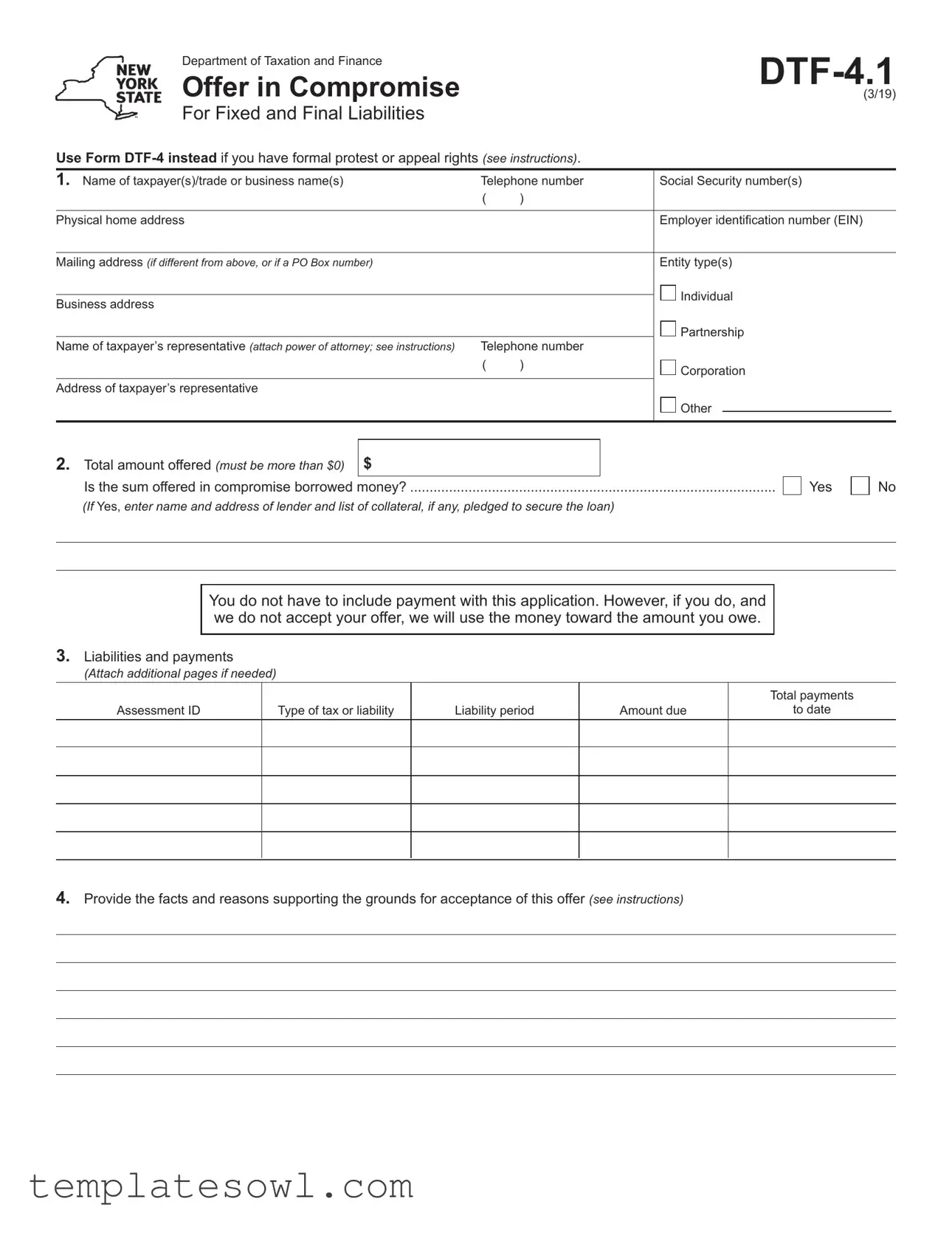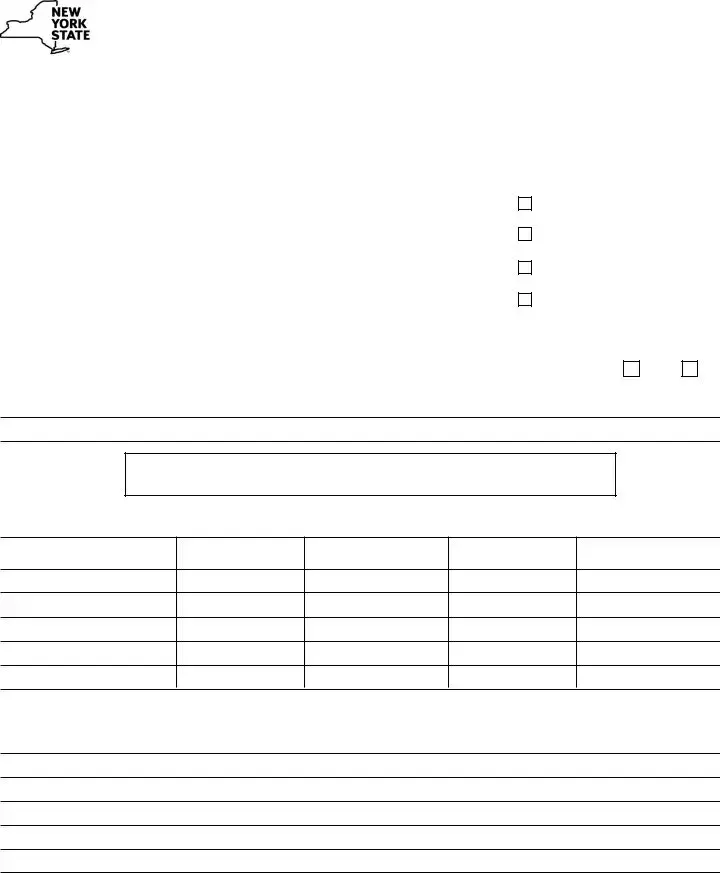1. What is the purpose of the DTF-4.1 form?
The DTF-4.1 form is used to submit an offer in compromise for fixed and final tax liabilities in New York State. Taxpayers can use this form when they do not have formal protest or appeal rights regarding the tax liabilities they owe. By filing this form, taxpayers are requesting the Tax Department to settle their debts for less than the full amount due.
2. When should I use the DTF-4 form instead of the DTF-4.1?
Use the DTF-4 form if you have formal protest or appeal rights for your liabilities. For instance, if your liabilities stem from a math error or a change made by the IRS to your federal return, the DTF-4 is the correct choice. If your liabilities are fixed and final without the opportunity for appeal, then the DTF-4.1 is appropriate.
3. Who is eligible to file for an offer in compromise using this form?
Eligibility for filing the DTF-4.1 includes individuals and businesses that have been discharged from bankruptcy, individuals and businesses that are insolvent (meaning their liabilities exceed the value of their assets), or individuals who would face undue economic hardship if required to pay their tax debt in full.
4. What information do I need to provide on the form?
The form requires details such as the taxpayer's name, social security number or employer identification number (EIN), physical address, and the total amount offered for compromise. Additionally, a comprehensive list of liabilities must be included, along with the reasons supporting your offer. If applicable, include documentation demonstrating your financial situation.
5. Do I need to submit any additional documents with my application?
Yes, you must attach a completed Form DTF-5, Statement of Financial Condition, along with copies of your last three federal income tax returns, a credit report dated within the last 30 days, and the last 12 months of bank statements. These documents help verify your financial status and support your request for compromise.
6. What happens if my offer is accepted?
If the Tax Department accepts your offer, the remaining balance of the liabilities included in the offer will be eliminated, provided you comply with all terms of the offer. This means you must fulfill any agreed payments and conditions to satisfy your debts officially. Acceptance does not happen until you receive written approval from the Tax Commissioner.
7. How is my offer amount evaluated?
The amount you offer must realistically reflect what the Tax Department believes they could collect within a reasonable time frame. Factors include the total value of your assets and anticipated future income. Make sure the proposed amount is justified based on your financial conditions.
8. Can I submit multiple offers in compromise for the same debt?
Generally, a taxpayer can only submit one offer in compromise for a specific liability and tax period. If your offer is accepted, it will forgive the debt only for the taxpayer whose offer has been approved. If other parties are involved in the liability, they will need to submit their own applications.
9. What if my financial circumstances change while my offer is pending?
While your offer is pending, it is critical to remain compliant with all filing and payment requirements for any tax periods not included in your offer. If your financial situation changes, you may need to inform the Tax Department, as this could affect your eligibility or the terms of the offer.
10. Where should I send my completed form and documents?
You must mail your completed DTF-4.1 form, along with Form DTF-5 and all supporting documents, to the New York State Tax Department at the address provided in the form instructions. Make sure to use a secure mailing method to ensure your documents arrive safely.



